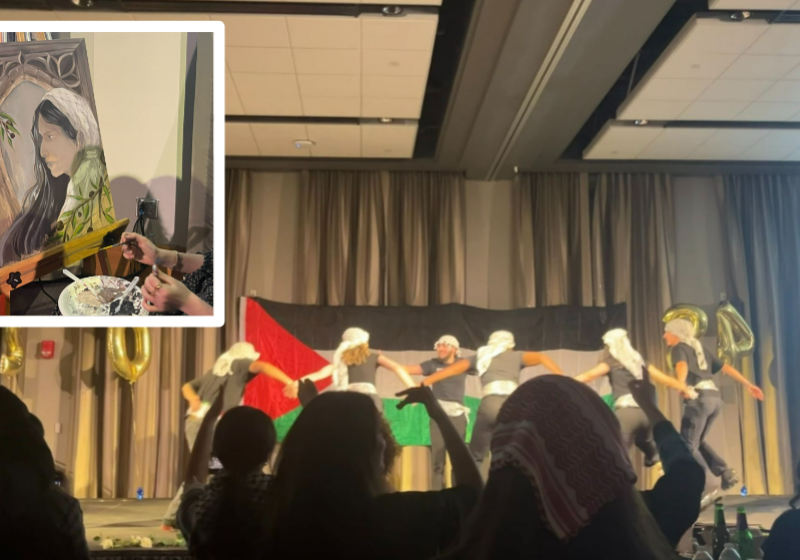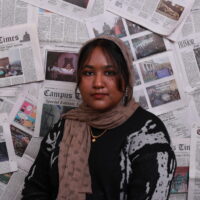On April 20, the Student Association for the Development of Arab Cultural Awareness (SADACA) hosted its annual charity gala, “Dinner for Peace,” in Feldman Ballroom. This year’s theme was none other than Palestine — a reflection of the Palestinian resistance movement echoing across the globe.
The event started with a video montage highlighting the genocide in Gaza alongside the protests happening worldwide in support of Palestine, whether by students at educational institutions or community members. At each seat was a pin of the Palestine flag, and the centerpiece, a keffiyeh patterned cloth with roses and a candle, aided in setting the mood of the event.
The president of SADACA, sophomore Sarah Aljitawi, shared a few words with the audience about her perspective as a Palestinian student in coping with the ongoing events in Gaza. After her speech, a performer was introduced onto a stage who played the oud, a Middle Eastern lute. This musical performance turned into a situation similar to a one-person band by including drums, the flute, and eventually singing lyrics of “Anna dammi falastini” (translation: My blood is Palestinian). A poem was recited by Ahmed Nasser about the souls lost in the battle. The unofficial debke team performed upbeat debke, a Levantine folk dance, to fast-paced and powerful beats of Palestinian music. The debke team performance became a big crowd. Everyone at the dinner linked arms and kicked their feet in time to the rhythmic music. The senior advisor, Laith, gave yet another moving speech about the ongoing genocide, keeping the audience wanting more by the time he ended his speech.
Throughout the program, Fadwa Al Dulaimee, an 11th grader, was doing a live painting of the event; as she progressed, her painting was checked from time to time. At the end of the event, the painting was auctioned off for 500 dollars, with all the proceeds going to the United Nations Relief and Works Agency for Palestine Refugees. It was a remarkable side view portrait of a woman with long flowing black curly hair wearing a keffiyeh, the traditional Palestinian headdress, looking straight ahead in front of a paved stone, with olive branches hanging in front of her and at the bottom corner of the portrait.
The dinner showcased aspects of Palestinian culture. It was a unique way of protesting against the genocide, against the Israeli occupation, against the university’s involvement with the genocide. There were no painted signs, no chanting; there was no need for masking. It was a night of simply learning about the distinct culture of this group of people — the rich and vibrant traditions and history of a country and its people that are currently being erased.
This year, “Dinner for Peace” was an artistic way of gathering people and joining them together in solidarity with our oppressed Palestinian brothers and sisters. “Dinner for Peace” utilized music, singing, poetry, dancing, and painting to remind people of not just the ongoing genocide in Gaza, but also the beauty and depth of Palestinian culture.


